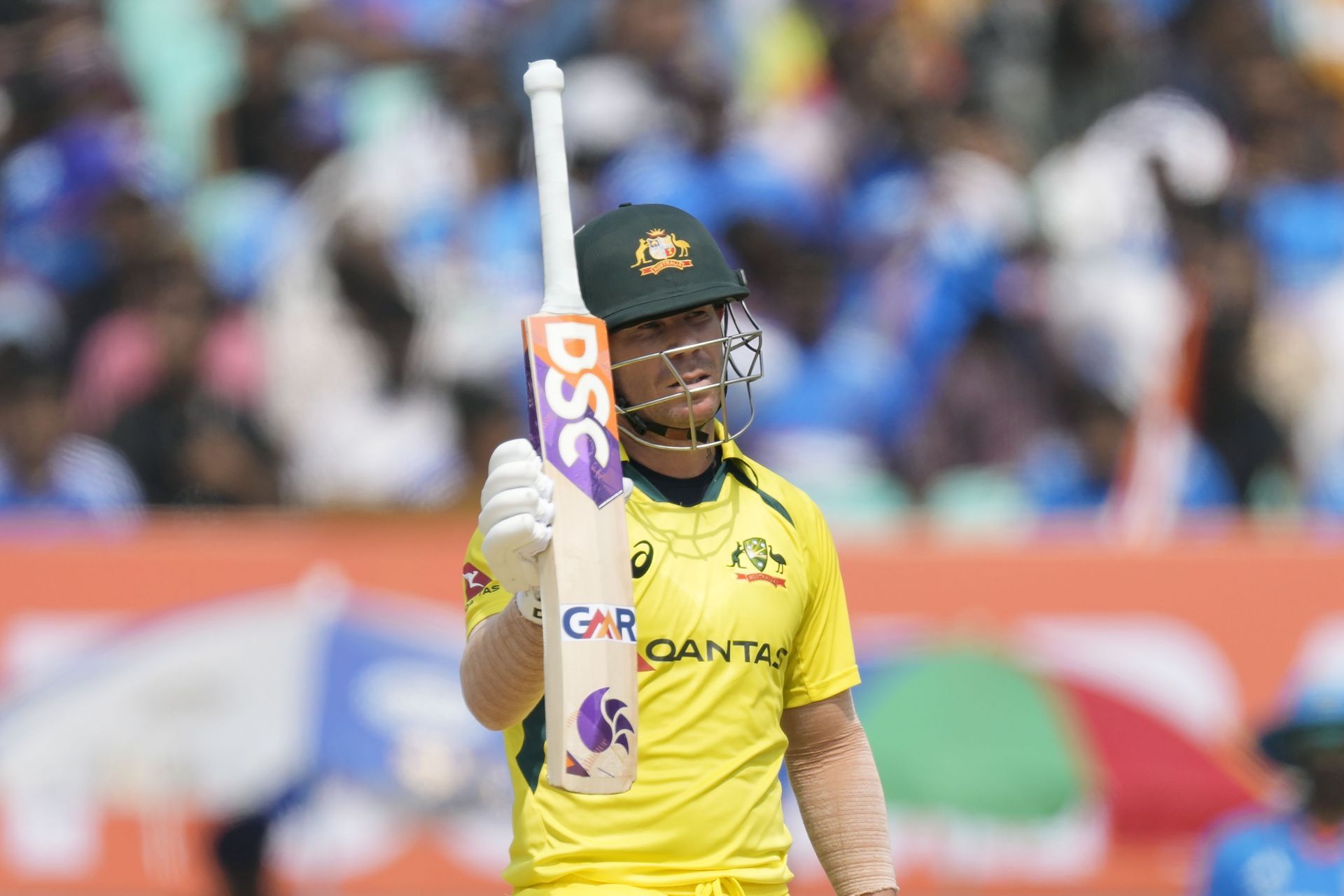
David Warner wakes Australia up from their recent ODI slumber
September 27, 2023, Rajkot, David Warner does his usual pre-match routine and strides out to open alongside Mitchell Marsh. The sun is baking down, and conditions, because they are so hot, are not quite conducive for batting long.
Australia have also arrived in Rajkot having lost five consecutive ODIs. Their batting has looked listless, and their bowling is anything but incisive. Injuries have not helped either. This, thus, seems like another perfect banana skin. If they lose, they can always put it down to the heat, and how they wanted to conserve themselves for the World Cup that starts in about a week’s time.
This is Australia, though. And more often than not, losing for them, that too six ODIs on the trot, is not really an option. But it cannot be denied that, at times, teams do sneak into this slumber mode, which can largely be put down to the sheer amount of cricket they play nowadays.
In such scenarios, nothing seems to go right, and aspects that would have otherwise seemed routine feel a lot more arduous. What helps in these circumstances, however, is for someone to grab the game by the scruff of the neck. Bat or bowl without a worry in the world. Just let the handbrake go, and see where it takes the team.
Once you have lost five ODIs on the spin, surely it cannot go any worse, right?
That might have been what a lot of players would have thought. Not David Warner. The explanation behind why he came out swinging against India at Rajkot was not that Australia were so down in the dumps that the only way was upwards.
Instead, it was because he, knowing that this could well be his last ODI World Cup, wants to sign off in style. That Australia had slipped into that slumber mode, meant that he could wake them up too, like only he can.
David Warner got to his fifty inside eight overs at Rajkot
Warner only made 56, which continued his string of half-centuries in India without getting to a ton. For context, three other Australian batters scored more. The kind of dominance he showed, though, was just what Australia needed – the sort of display that helps them click into gear as the World Cup dawns.
Warner has made a habit of this too. The last two times Australia have won an ICC white-ball trophy, he has been pivotal. The 2015 World Cup was lit up by Aaron Finch’s hundred against England in front of a jam-packed Melbourne Cricket Ground (MCG). But it was Warner who carried that mantle throughout the tournament, scoring 345 runs and finishing as their second-highest run-getter, only behind Steve Smith.
The left-handed batter averaged close to 50 and struck at a shade more than 120, indicating that he frequently put bowlers to the sword early, almost proclaiming that Australia wanted to call the shots from the outset, irrespective of who they were facing.
The Delhi Capitals opener was in similarly bruising form at the 2021 T20 World Cup. Australia, for what it is worth, entered that tournament on the back of a lot of defeats in the format, only for Warner to own that event and end up with the Player of the Series award.
Funnily enough, there were murmurs around his spot in the side prior to that T20 World Cup. It has definitely not reached that stage in this format, but having seen his Test stocks drop drastically in the recent past, this World Cup is a good opportunity for Warner to remind just how destructive he remains in the white-ball arena.
Throughout his career, he has relished the big stage. In ODI World Cups, he averages 62 and has scored 992 runs across 18 innings, at a strike rate a tick under 100. In tournament finals, he averages 73.6, while in preliminary games, he averages 50.75, showing that he starts and finishes tournaments strongly.
These numbers, though, do not tell the whole story. Warner has always been more than just pure stats. What he brings to the table cannot be quantified, and can perhaps never be. Just take a look at what happened in Rajkot on Wednesday.
India, despite resting players, had four of their five first-choice front-line bowlers playing. Warner, thus, made it a point to take down Mohammed Siraj, fresh from his heroic Asia Cup final exploits.
That, in a nutshell, is what Warner is all about. He will stare down the best bowler the opposition has, and he will try to obliterate him. More often than not, he comes out on top, and that sets Australia up to bat teams out of the game.
If Warner is firing at the top, it gives Steve Smith and potentially Marnus Labuschagne the time to graft and build a solid foundation, which can then be capitalized upon by Cameron Green, Glenn Maxwell, and Marcus Stoinis.
With Marsh expected to open alongside Warner, at least at the start of the World Cup, Australia can also psychologically dent their opponents early, just because of how authoritative and belligerent the pair can be.
In World Cup games, the greatest blow is not the balls that are hit to the fence or the balls that smash into the stumps. It is the fear that you induce in the opposition’s head – an art Warner has mastered over the years and is almost unparalleled in.
He woke Australia up from their recent ODI slumber, putting forth a teaser in Rajkot. And don’t be surprised if that premieres on a grander scale in the games that really matter in the next couple of months. Rather, be surprised if it does not.